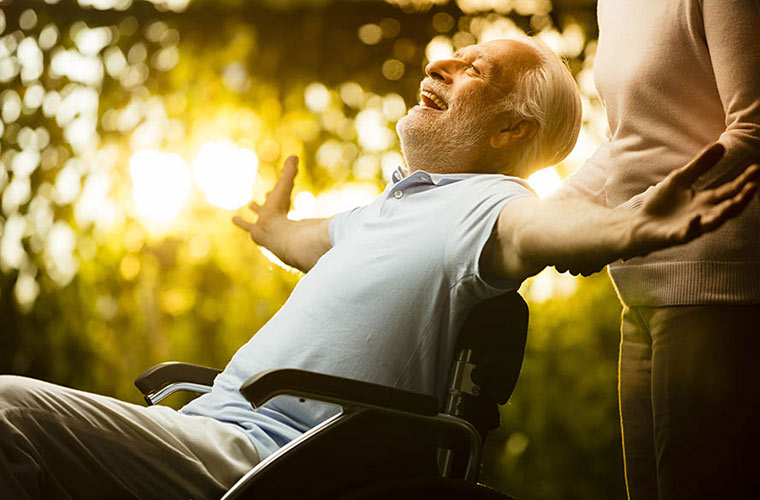
Aging brings wisdom, but it also introduces physical challenges. Reduced strength, joint stiffness, pain, and the risk of falling can threaten a senior’s freedom and confidence. Physiotherapy and rehabilitation offer a powerful, evidence-based path forward—restoring mobility, easing pain, and rekindling a sense of independence.
1. Improved Mobility & Independence
Why it matters:
Age-related muscle loss (sarcopenia), joint degeneration, and reduced flexibility can make daily tasks increasingly difficult. Physiotherapists design customized exercise plans—combining strength, flexibility, and coordination work—that gently rebuild functional mobility.
Evidence & Example:
Studies show consistent physiotherapy reduces disability by about 25%, allowing seniors to regain independence in walking, climbing stairs, or even enjoying hobbies like gardening.
2. Balance Training & Fall Prevention
Why it matters:
Falls affect one in three adults over 65, often leading to fractures, hospitalizations, or fear of movement. Physiotherapy emphasizes balance training and postural control—using gait drills, core strengthening, and coordination exercises.
Evidence & Example:
Meta-analyses show multifaceted exercise routines reduce fall risk by 23–30%, with balance-based programs alone reducing injurious falls by more than 37%. For someone who fell previously, virtual-reality-enhanced treadmill training cut future falls by 42%.
3. Chronic Pain Management
Why it matters:
Conditions like arthritis and spinal osteoarthritis cause persistent discomfort and restrict movement. Physiotherapy offers drug-free, hands-on solutions—massage, thermal treatments, electrical stimulation, and movement therapies.
Evidence & Example:
Significant pain reduction and increased flexibility have been documented, such as a 6-week therapy course that reduced back pain scores by nearly three points.
4. Tailored Post-Surgery & Injury Recovery
Why it matters:
Joint surgeries and fractures—which are common in older adults—demand guided rehabilitation to restore function and mobility. Physiotherapists tailor recovery plans with gradual progression.
Evidence & Example:
Studies confirm that post-surgical physiotherapy enhances recovery speed and lowers reinjury risk. Patients regain confidence in moving independently sooner than those without therapy.
5. Managing Chronic Conditions
Why it matters:
Rehabilitation helps manage diseases like osteoporosis, COPD, Parkinson’s, and post-stroke conditions, using specialized exercise regimens.
Example:
Resistance training slows bone loss in osteoporosis, while breathing exercises can improve lung capacity in COPD. Neurological rehab focuses on regaining motor function through repetitive, purposeful movements.
6. Improved Posture & Respiratory Health
Why it matters:
Aging posture and compromised breathing can impair everyday functioning. Physiotherapy includes alignment exercises and breathing techniques to address these issues.
Evidence & Example:
Postural correction has lowered pain and improved breathing by enhancing lung expansion. Daily breathing routines support better oxygen flow, improving stamina.
7. Cognitive & Emotional Resilience
Why it matters:
Physical improvement often brings mental uplift. Physiotherapy sessions release endorphins—natural feel-good chemicals—and group interactions provide connection and community.
Evidence & Example:
Regular therapy participants report improved mood, reduced anxiety, and increased social engagement, helping to reduce loneliness and depression.
8. Self-Care Skills & Long-Term Empowerment
Why it matters:
Therapists train seniors in safe movement techniques, proper posture, and how to use mobility aids. They also recommend environmental modifications to prevent injuries.
Evidence & Example:
Seniors learn how to change direction safely, rise from chairs without falling, and walk confidently using a cane—skills that preserve autonomy and improve quality of life.
The Holistic Impact
Bringing these benefits together yields
- Greater independence
- Fewer injuries and falls
- Less reliance on pain medication
- Quicker recovery from surgery or illness
- Enhanced mental well-being
- Sustained confidence and daily competence
Each benefit supports the others—building a stronger, more resilient life.
The Research Speaks
- Mobility improvements happen even with low-to-moderate levels of physiotherapy.
- Balance and strength training reduce fall risk by 23–30% across large trials.
- Balance-focused programs show a 37% reduction in injury from falls and 43% fewer severe injuries.
- Adults taking part in 150+ minutes of diverse weekly exercise see up to a 35–50% reduction in falls.
Bringing It All to Life at Akshayvat
At Akshayvat Eldercare, our approach incorporates these compelling findings into compassionate care:
- Personalized therapy: one-on-one sessions focusing on mobility, balance, and posture
- Group sessions: combining social interaction with soothing exercises
- Pain-reducing modalities include massage, heat therapy, and electrical stimulation
- Condition-specific programming: for osteoporosis, COPD, arthritis, or post-surgery needs
- Home safety guidance: advising on modifications, trim rails, and non-slip surfaces
- We empower residents to reclaim their independence, freedom, and joy.
Physiotherapy and rehabilitation are more than optional treatments—they are essential lifelines that empower seniors to live fully. For those facing physical changes, these therapies provide
- Restored mobility
- Reduced pain
- Enhanced safety
- Improved mental health
- Renewed independence
Supported by science and compassion, Akshayvat Eldercare invites seniors to thrive—not just survive—in their golden years.

